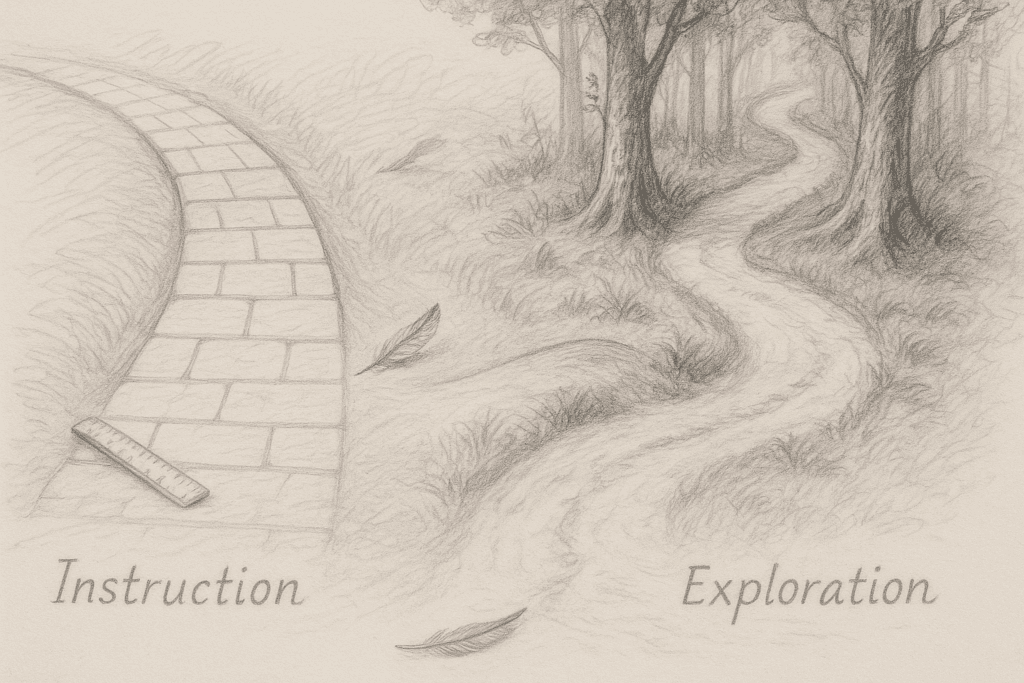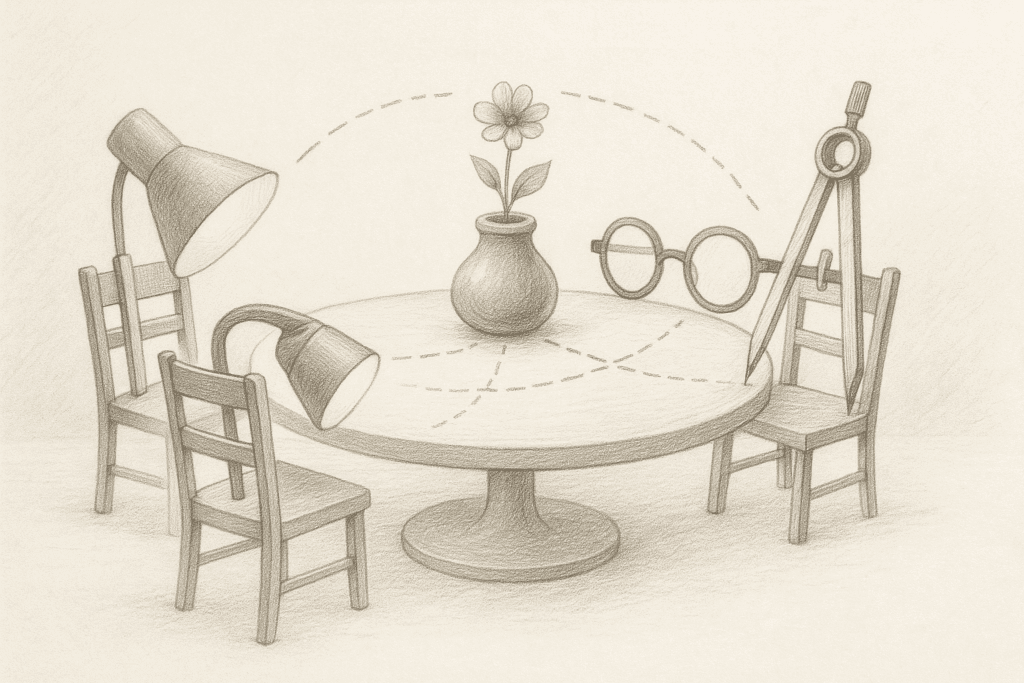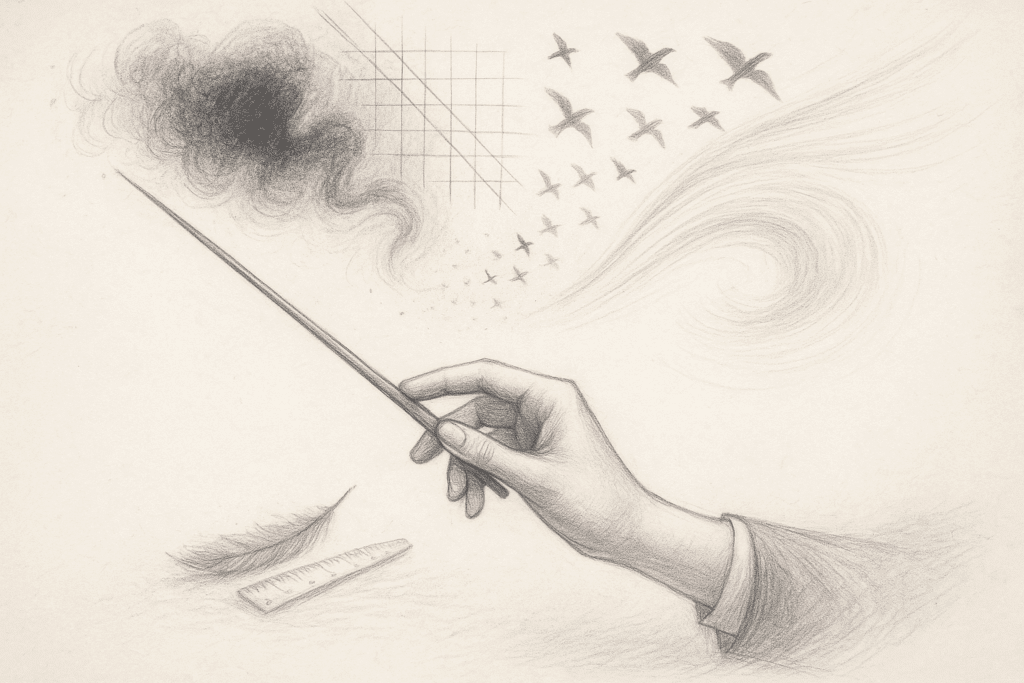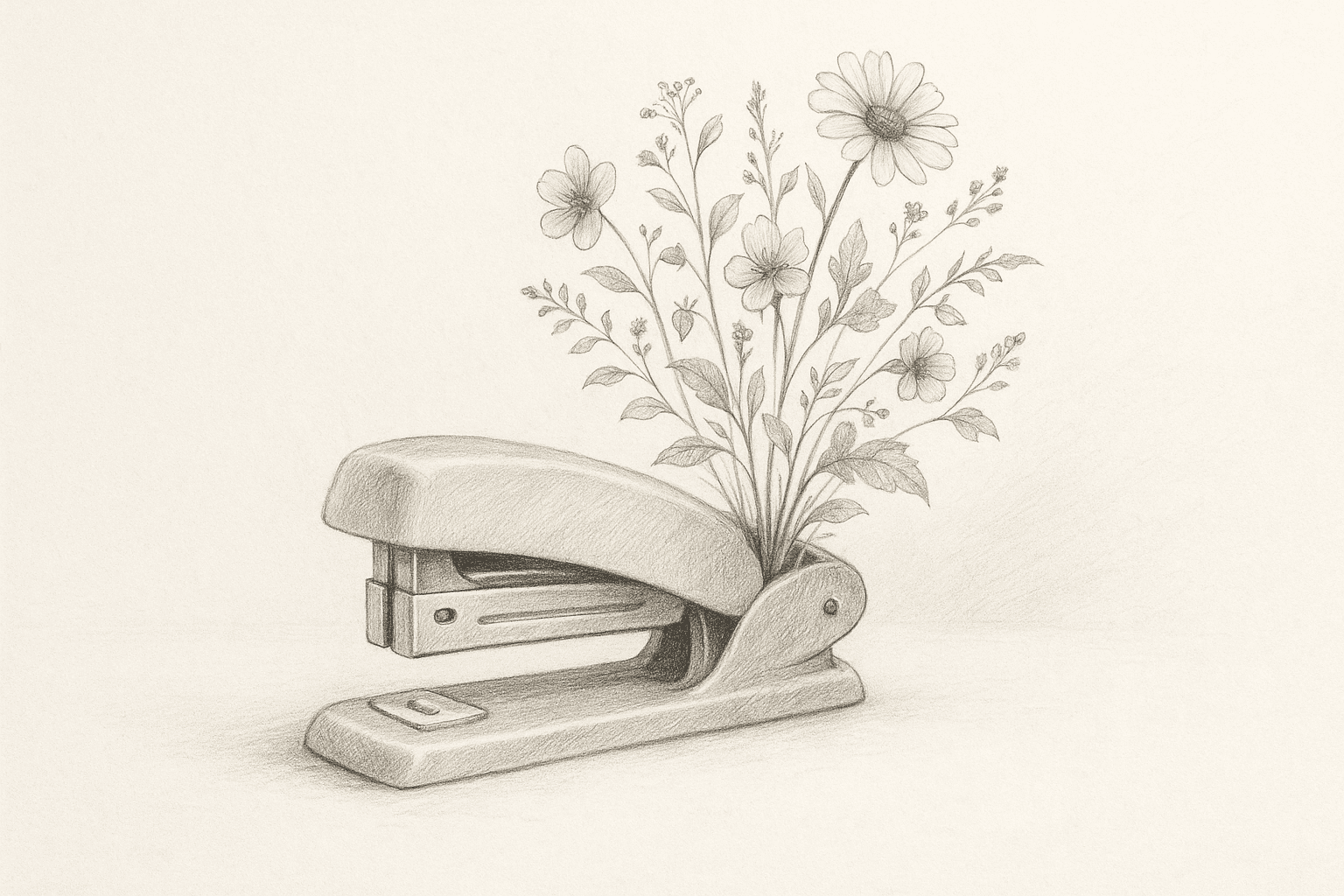Flowers sprouted out of the stapler. Not because I asked for it, but because somewhere between my rambling thoughts about “delightful creative abandon” and Mae’s (my AI illustrator) interpretation of my vision, magic happened. This was collaboration at its most surprising.
When I first started playing with how to collaborate with AI as a creative director, I’d write instructions with words like “thoughtful” and “courageous,” believing I was being clear. Instead, I was teaching my AI to be a well-meaning rebel, breaking its own rules in pursuit of some vague idea I hadn’t properly defined.
The truth about scaling creativity with AI isn’t what creative directors might expect. It’s not about building a robot that takes orders. It’s about creating distinct collaborators who can surprise you with interpretations you never imagined while still feeling unmistakably on-brand.
How can creative directors collaborate with AI?
Creative directors can collaborate with AI by training multiple specialized assistants, each with clear roles and creative boundaries. Define your brand’s non-negotiables, then invite AI to surprise you within those constraints. The result? Scalable creativity with consistent, on-brand expression.
The Paradox of Creative AI Training

Here’s what’s interesting about creative AI training: fuzziness is the enemy of creativity. Counterintuitive? Maybe. But “thoughtful” means nothing to an AI. It’s a placeholder where precision would be better. When I stopped using abstract descriptors and started defining exactly what made something feel thoughtful in my brand’s context, my AI collaborators began creating work that didn’t just follow rules but delighted me.
My breakthrough in creative AI collaboration came when I separated instruction from exploration. Instructions (for example in custom GPTs) demand absolute clarity: This is the voice. These are the boundaries. This is what we never do. But creative development through prompting those GPTs? That’s where stream of consciousness comes into play. I’ll ramble about the feeling I’m chasing, the mood somewhere between professional and poetic, and watch as my AI collaborators translate that musing into a surprise.
How I Built My AI Creative Team

I don’t have one AI assistant for creative exploration. I have a creative collective, each trained for a specific role in scaling creativity with AI. There’s the rule-keeper who checks for SEO and AEO optimization, focused on discoverability. There’s the provocateur who pushes boundaries. And there’s Mae, my visual collaborator who only works in Moleskine notebook sketches, who somehow understood that “office meets creative abandon” meant a stapler blooming with flowers.
The magic happens in the between spaces. I’ll start with a concept, let one AI develop it, then pass it to another for refinement or challenge. It’s like having a writers’ room that’s always ready to go, where each perspective is distinct but working towards the central vision. The SEO specialist might flag that my poetic metaphor is not something people will really get. The creative provocateur might suggest rethinking everything. I orchestrate, making final decisions, but the collaborative process surfaces possibilities I wouldn’t have discovered alone.
The Multiplication Effect of Brand Voice AI Training
The creative process I’ve been experimenting with, which I call Augmented Branding, is all about amplification. I don’t believe my creative vision is diminished because AI helps execute it; it’s simply a way I can explore ten directions simultaneously at 8 AM when inspiration strikes. I can test how an AI creative handles different contexts, different audiences, different moods, all while maintaining the essential brand character.
The framework I’ve developed for myself to teach AI scaleable creativity isn’t complicated, but it does require a shift in thinking. It means you have to stop trying to create an AI version of yourself. The one who knows what you want and how to get there. Instead, start building specialized collaborators who understand different facets of your brand vision. Define your non-negotiables with clarity, then create space for surprise within those boundaries.
Most importantly, recognize that scaling creativity with AI isn’t a one-time setup. It’s an ongoing conversation. Every project refines the understanding and the possibilities. Every surprise (like that flowering stapler) becomes a possible part of the brand’s story.
Why Creative Directors Aren’t Being Replaced

Creative directors are not becoming obsolete, not anytime soon. In fact, a creative director that can work with AI collaborators as effectively as they can with humans will be a very powerful thing indeed. The brands that will thrive won’t be clinging to traditional creative processes or those abandoning human judgment for AI efficiency. They’re the ones mastering this new form of creative AI collaboration, where human vision and AI capability create something neither could achieve alone.
Your brand’s creativity can scale without diluting (as long as you keep a close eye on things). Your creative vision can expand without fragmenting. But first, you have to stop thinking of AI as a tool and start thinking of it as a creative collective waiting to be unleashed by your vision.
The stapler still has flowers growing from it. I look at it from time to time as a reminder of that moment of delight I had when I first saw it. That was the moment I realized that AI could be my conceptual creative partner. That the best brand work has always happened when a clear vision enabled surprising interpretation. That’s the real promise of scaling brand creativity with AI: not perfection, but endless, on-brand reinvention.
Amy has spent over two decades helping organizations articulate their distinct brand voice across evolving media landscapes. Her work bridges the intersection of human creativity and technological innovation, guiding brands through digital transformation while preserving their authentic character. Driven by curiosity about how creative vision scales, Amy explores the collaborative possibilities between human insight and AI capability to help brands achieve what neither could accomplish alone.
AI Collaboration for Creative Directors
AI can reflect a creative director’s vision when provided with specific brand guidelines, visual examples, and clear creative boundaries. The key is balancing precise direction with space for exploration, allowing AI to generate work that authentically represents your brand identity while discovering unexpected possibilities within those guidelines.
Train AI by providing concrete examples rather than abstract descriptions. Share actual work samples, specify exact language preferences, and create clear do/don’t lists. Separate instructional knowledge from exploratory prompts. Most importantly, show rather than tell: feed AI real examples of on-brand work to establish a tangible reference point.
Use multiple specialized AI tools, each assigned to specific creative functions. Think of it as assembling a digital creative team: one AI for visual concepts, another for copy variations, another for technical optimization. This approach mirrors traditional creative departments, with you directing how these specialized tools work together toward unified outcomes.
AI amplifies rather than replaces creative directors. The role is evolving to orchestrate collaboration between human insight and machine capabilities. Creative directors gain tools for rapid iteration and expanded possibilities while maintaining the strategic vision, emotional intelligence, and cultural understanding that only humans provide.
Begin by documenting your brand’s essential elements: voice principles, visual standards, and core values that cannot be compromised. Create a foundation of non-negotiables, then develop specialized AI workflows for different creative needs. This framework allows AI to explore confidently within established boundaries while maintaining brand integrity.
